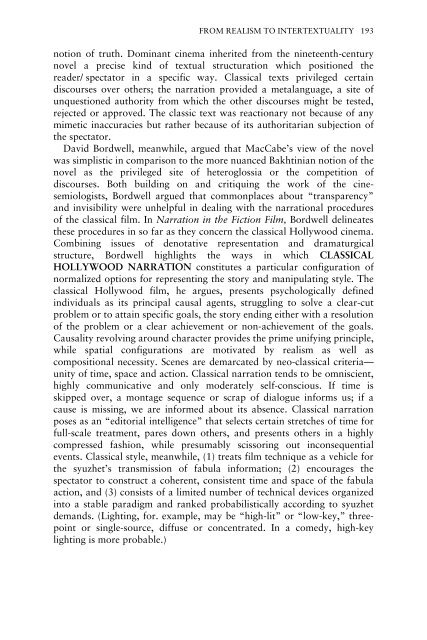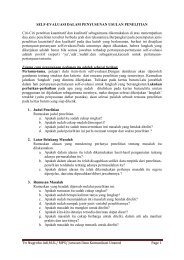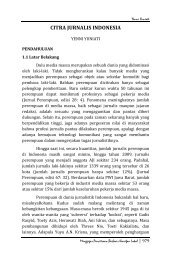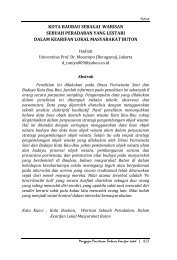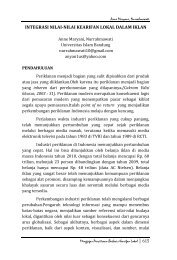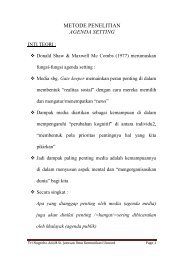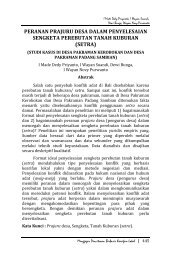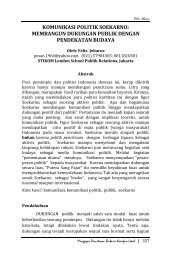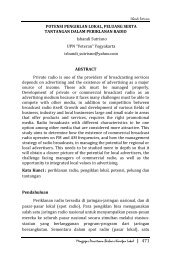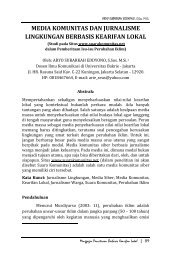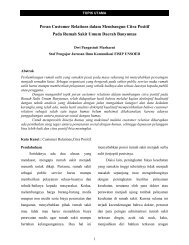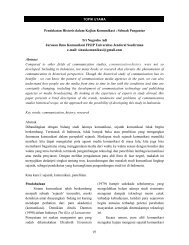New Vocabularies in Film Semiotics
New Vocabularies in Film Semiotics
New Vocabularies in Film Semiotics
You also want an ePaper? Increase the reach of your titles
YUMPU automatically turns print PDFs into web optimized ePapers that Google loves.
FROM REALISM TO INTERTEXTUALITY 193<br />
notion of truth. Dom<strong>in</strong>ant c<strong>in</strong>ema <strong>in</strong>herited from the n<strong>in</strong>eteenth-century<br />
novel a precise k<strong>in</strong>d of textual structuration which positioned the<br />
reader/ spectator <strong>in</strong> a specific way. Classical texts privileged certa<strong>in</strong><br />
discourses over others; the narration provided a metalanguage, a site of<br />
unquestioned authority from which the other discourses might be tested,<br />
rejected or approved. The classic text was reactionary not because of any<br />
mimetic <strong>in</strong>accuracies but rather because of its authoritarian subjection of<br />
the spectator.<br />
David Bordwell, meanwhile, argued that MacCabe’s view of the novel<br />
was simplistic <strong>in</strong> comparison to the more nuanced Bakht<strong>in</strong>ian notion of the<br />
novel as the privileged site of heteroglossia or the competition of<br />
discourses. Both build<strong>in</strong>g on and critiqu<strong>in</strong>g the work of the c<strong>in</strong>esemiologists,<br />
Bordwell argued that commonplaces about “transparency”<br />
and <strong>in</strong>visibility were unhelpful <strong>in</strong> deal<strong>in</strong>g with the narrational procedures<br />
of the classical film. In Narration <strong>in</strong> the Fiction <strong>Film</strong>, Bordwell del<strong>in</strong>eates<br />
these procedures <strong>in</strong> so far as they concern the classical Hollywood c<strong>in</strong>ema.<br />
Comb<strong>in</strong><strong>in</strong>g issues of denotative representation and dramaturgical<br />
structure, Bordwell highlights the ways <strong>in</strong> which CLASSICAL<br />
HOLLYWOOD NARRATION constitutes a particular configuration of<br />
normalized options for represent<strong>in</strong>g the story and manipulat<strong>in</strong>g style. The<br />
classical Hollywood film, he argues, presents psychologically def<strong>in</strong>ed<br />
<strong>in</strong>dividuals as its pr<strong>in</strong>cipal causal agents, struggl<strong>in</strong>g to solve a clear-cut<br />
problem or to atta<strong>in</strong> specific goals, the story end<strong>in</strong>g either with a resolution<br />
of the problem or a clear achievement or non-achievement of the goals.<br />
Causality revolv<strong>in</strong>g around character provides the prime unify<strong>in</strong>g pr<strong>in</strong>ciple,<br />
while spatial configurations are motivated by realism as well as<br />
compositional necessity. Scenes are demarcated by neo-classical criteria—<br />
unity of time, space and action. Classical narration tends to be omniscient,<br />
highly communicative and only moderately self-conscious. If time is<br />
skipped over, a montage sequence or scrap of dialogue <strong>in</strong>forms us; if a<br />
cause is miss<strong>in</strong>g, we are <strong>in</strong>formed about its absence. Classical narration<br />
poses as an “editorial <strong>in</strong>telligence” that selects certa<strong>in</strong> stretches of time for<br />
full-scale treatment, pares down others, and presents others <strong>in</strong> a highly<br />
compressed fashion, while presumably scissor<strong>in</strong>g out <strong>in</strong>consequential<br />
events. Classical style, meanwhile, (1) treats film technique as a vehicle for<br />
the syuzhet’s transmission of fabula <strong>in</strong>formation; (2) encourages the<br />
spectator to construct a coherent, consistent time and space of the fabula<br />
action, and (3) consists of a limited number of technical devices organized<br />
<strong>in</strong>to a stable paradigm and ranked probabilistically accord<strong>in</strong>g to syuzhet<br />
demands. (Light<strong>in</strong>g, for. example, may be “high-lit” or “low-key,” threepo<strong>in</strong>t<br />
or s<strong>in</strong>gle-source, diffuse or concentrated. In a comedy, high-key<br />
light<strong>in</strong>g is more probable.)


